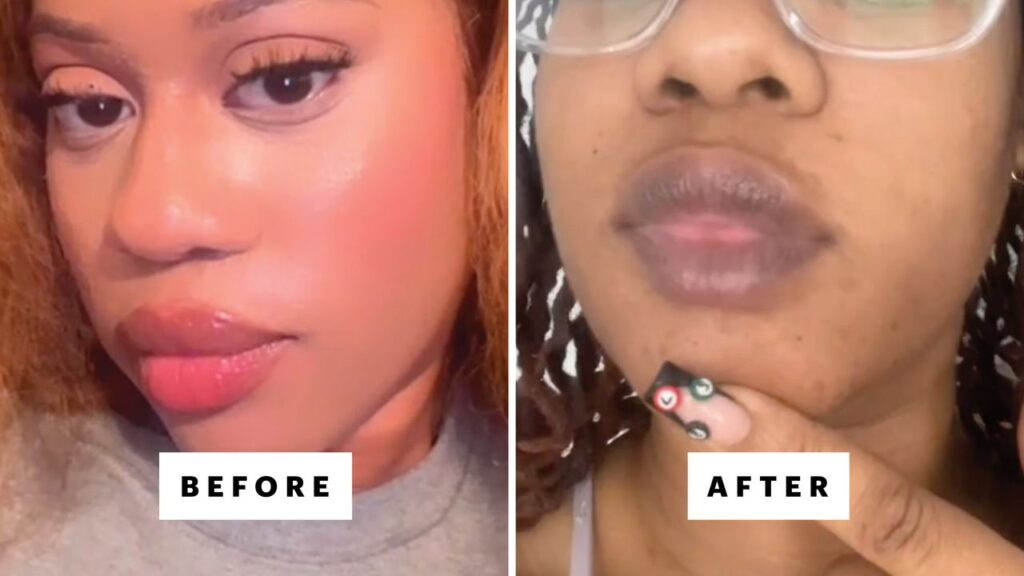In recent weeks, a captivating yet alarming dialogue has emerged on TikTok regarding Dior’s Addict Lip Glow Oil, particularly among Black women who report troubling side effects. Numerous TikTok videos detail experiences of lip discoloration, with users claiming their lips have darkened or even turned black after using the popular product, sparking widespread reactions ranging from shock to confusion about the safety of this beauty staple. This conversation has raised significant concerns not just about the product itself but also about how some cosmetics may disproportionately affect specific demographic groups, particularly those with darker skin tones.
The underlying issue appears to be linked to a skin condition known as post-inflammatory hyperpigmentation, as explained by several board-certified dermatologists. This condition arises in response to skin irritation or injury and is characterized by the overproduction of melanin, which can lead to dark spots. Dermatologist Mona Gohara notes that individuals with melanin-rich skin are particularly prone to this phenomenon. Even mild exposure to irritants can trigger significant pigmentation changes, revealing how sensitive darker skin can be to seemingly harmless products. This is a critical point in the discourse surrounding cosmetic safety, highlighting a need for greater awareness of how different skin types can react variably to common ingredients.
While the precise cause of irritation remains a matter of investigation, dermatologists suggest that certain components in the Dior formula might be subtly destabilizing the lips. One possible culprit is the synthetic fragrance included in the product, which is a known trigger for contact dermatitis. Additionally, the presence of Red Dye No. 7 raises concerns as it can also irritate the delicate lip skin. Despite the formula’s overall safety profile, experts warn that even ingredients typically regarded as safe might lead to unexpected reactions in sensitive populations.
Dior’s Addict Lip Glow Oil features an array of synthetic polymers that serve to hydrate and add shine without penetrating deeply into the skin, a characteristic that typically lends these ingredients a good safety reputation. However, as cosmetic chemists explain, the inclusion of fragrance and specific dyes complicates this narrative. Kelly Dobos, a cosmetic chemist, emphasizes that while many ingredients in the formula do not penetrate the skin easily, the combination of its components could nevertheless pose risks, especially for individuals with heightened sensitivity.
The TikTok phenomenon reflects a broader societal issue: the unequal attention given to the health concerns of marginalized groups in the beauty industry. Many consumers may not realize that their experiences, particularly those involving skin discoloration, could stem from the products they use daily. These revelations create an opportunity for beauty brands to engage in more thorough testing and transparent communication about potential side effects specific to various skin types. The discussions on TikTok underscore a collective desire for acknowledgment and better practices in product formulation to avoid such adverse reactions.
In conclusion, the situation surrounding Dior’s Addict Lip Glow Oil not only highlights the potential risks associated with certain cosmetic products but also emphasizes the importance of inclusivity in beauty. Brands must prioritize safety and efficacy across diverse skin types, integrating more comprehensive research into their product formulations. As consumers share their experiences and seek accountability, the industry has a chance to evolve and respond to these concerns, fostering a culture of transparency and trust as part of the beauty conversation.

